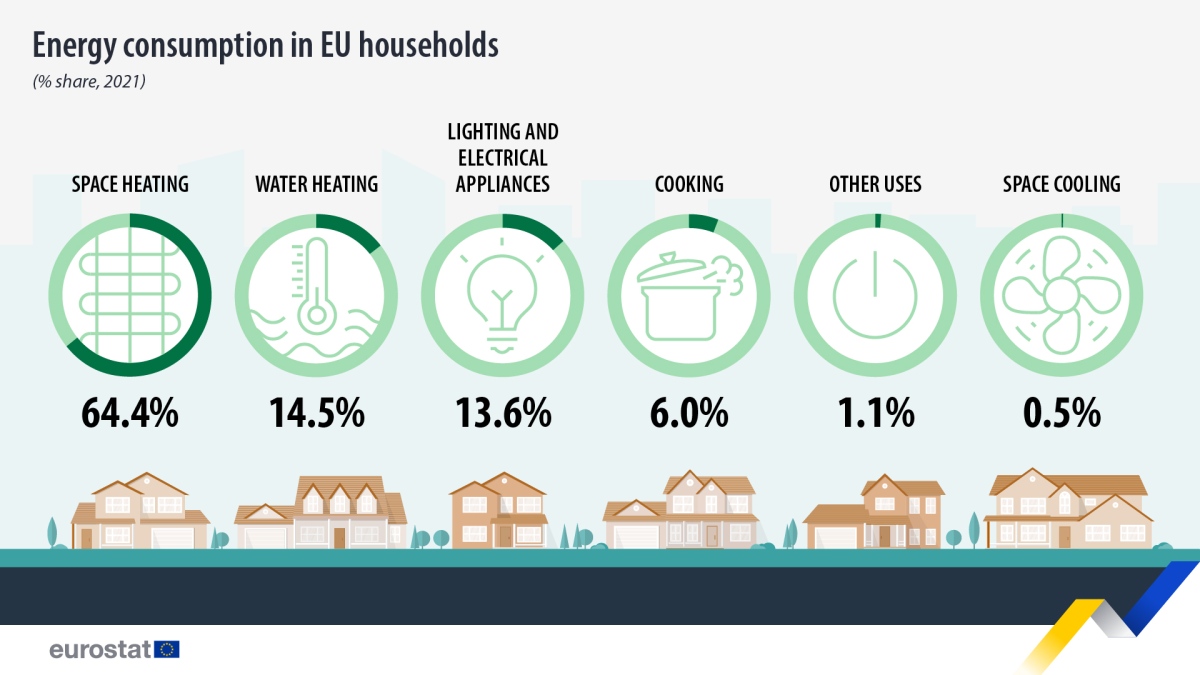
In 2021, households accounted for 27% of final energy consumption in the EU. Most of the final energy consumption of EU households was covered by natural gas (33.5%) and electricity (24.6%). Renewable energy accounted for 21.2%, followed by oil and oil products (9.5%) and derived heat (8.6%). A small percentage (2.5%) was still covered by coal products (solid fossil fuels).

Compared to 2020, in 2021 the energy consumption among EU households increased by 5.5% to a total value of almost 11.0 million terajoules, with the share of natural gas (+1.8 percentage points (pp)), renewable energies (+0.9 pp) and derived heat (+0.4 pp) in final household consumption increasing. On the other hand, the share of oil and oil products decreased more significantly (-2.8 pp), while electricity and solid fossil fuels followed the same trend (-0.2 pp each).
In the EU, the main energy use in dwellings is space heating (64.4 % of final energy consumption in the residential sector), followed by water heating (14.5 %). Electricity used for lighting and most household appliances accounts for 13.6% (excluding the use of electricity to power the main heating, cooling or cooking systems).
Major cooking appliances require 6.0% of the energy used by households, while other end uses and space cooling account for 1.1% and 0.5% respectively. Space and water heating thus account for 78.9% of final energy consumption by households, indicating an increase of 1.0 percentage point compared to 2020.
Compared to 2020, consumption in all 6 end uses mentioned above increased in 2021, but most noticeably in terms of space cooling (+10%) and space heating (+7%). The general category 'other uses' also increased by 17%.